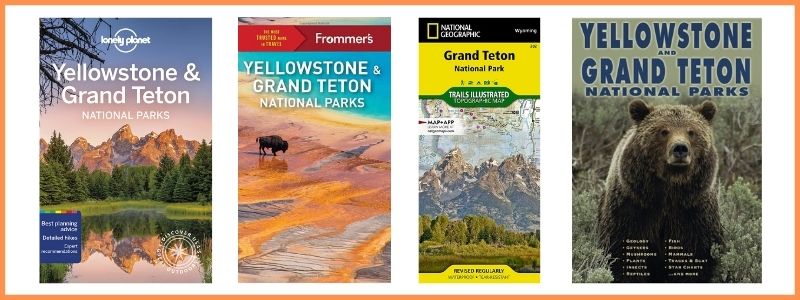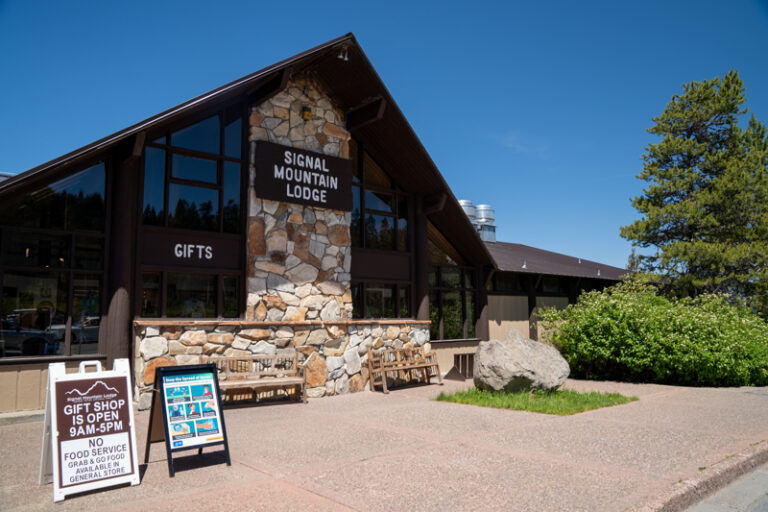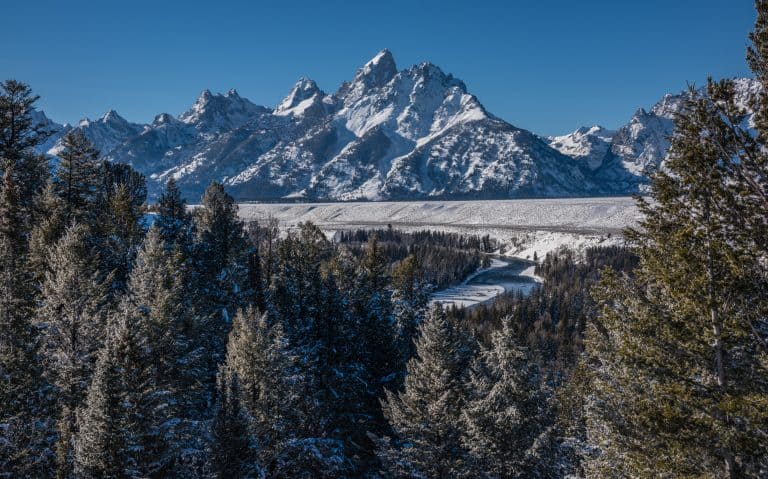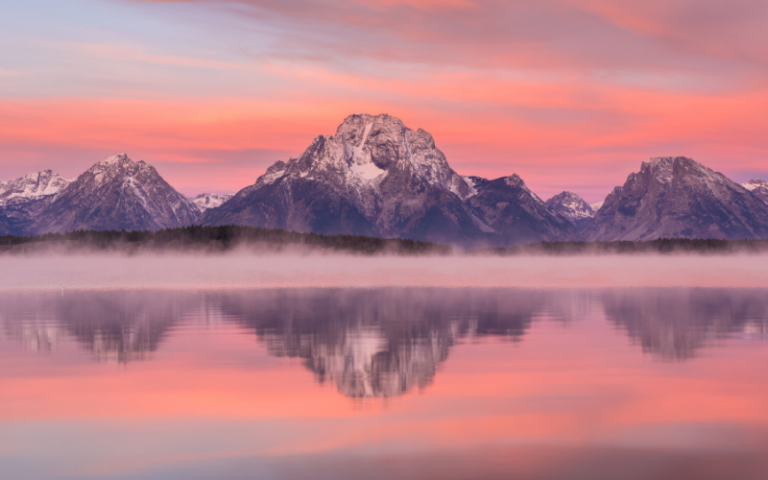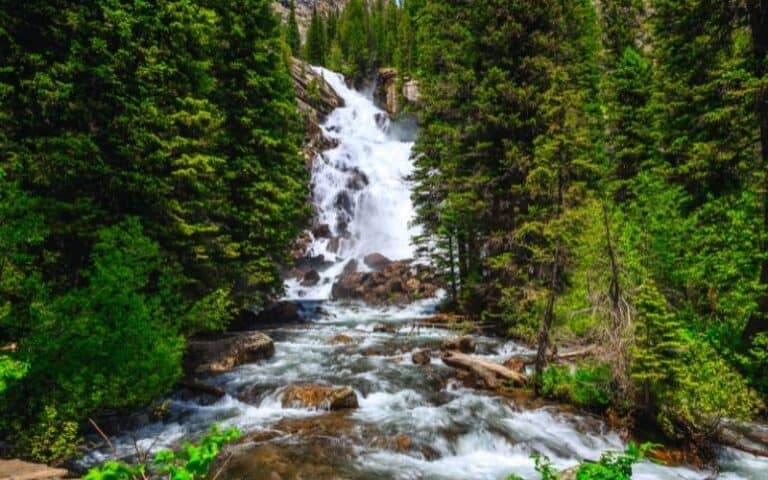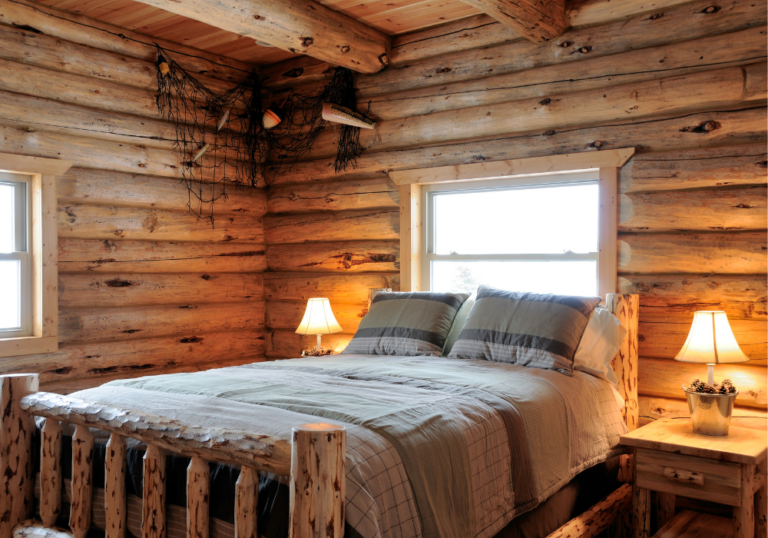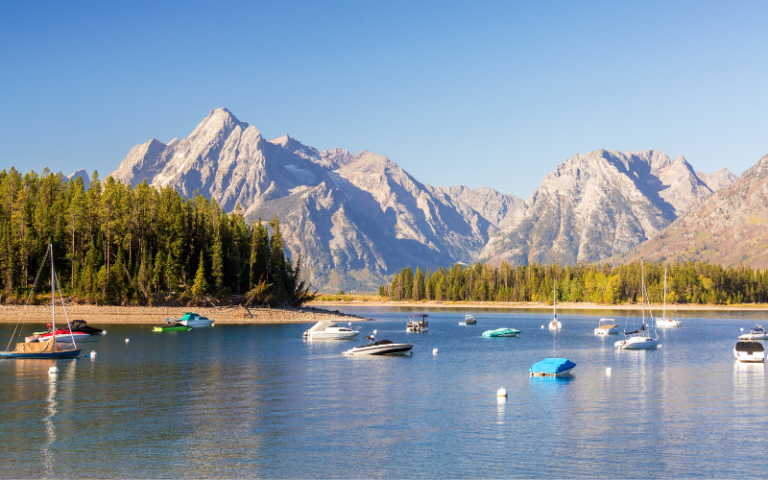20 Fun Grand Teton National Park Facts
Grand Teton National Park is one of the most spectacular places in America. In this article, we will take a look at some fascinating Grand Teton National Park facts that you may not have known before: location, history, geology, and weather!
Located in Wyoming, the park is home to some of the country’s tallest mountains and most majestic wildlife. Use this Grand Teton National Park guide to learn more about the park before you visit.
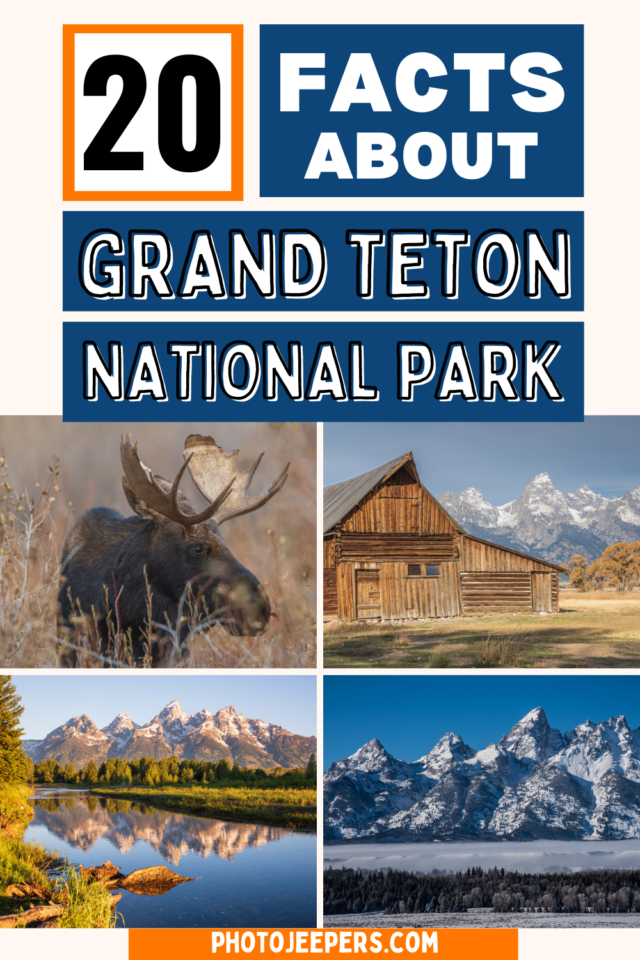
We also share important things to know to help you plan your Grand Teton vacation: what to pack, things to do, and where to say.
Use our Grand Teton National Park packing list to make sure you have the right clothing and gear for visiting any time of year! Grab your free printable packing checklist by clicking the image below!
This site contains affiliate links which means WE may receive commissions for purchases made through these links. We only provide links to products we actually use and/or wholeheartedly recommend! As an Amazon Associate, we earn from qualifying purchases. Read the full Disclosure Policy.
A Photo Tour of Grand Teton National Park
Take a visual tour through Grand Teton National Park to see the stunning landscape and wildlife you’ll find in the park!
Grand Teton National Park Facts
Before visiting any park, we recommend learning a few facts about US National Parks before your trip.
Located in northwestern Wyoming, Grand Teton National Park offers visitors stunning views of jagged mountains, lush forests and crystal blue lakes.
Whether you’re looking to explore nature on foot or take advantage of the many Grand Teton National Park activities available like kayaking, fishing or horseback riding, there is something for everyone.
In the summer at Grand Teton you can enjoy hiking, fishing, kayaking, and photography. In the winter you can enjoy snow activities like snowshoeing, cross country skiing, snowmobiling.
Here are facts about Grand Teton National Park that you might not have known! These facts are great for brushing up on your park knowledge or preparing for an upcoming trip.
Basics About Grand Teton National Park
First, let’s start with the basics of Grand Teton:
- Location: Northwest Wyoming near Jackson
- Date it Became a National Park: 1929
- Acreage: 485 Square Miles
- Number of Visitors: Over 3.8 Million Visitors in 2021
- Highest Elevation: Grand Teton Peak (13,775 feet)
- Lowest Elevation: Fish Creek at the south boundary (6,320 feet)
- Climate: Semi-arid mountain climate. Extreme high: 97°F | Extreme low: -63°F. Average snowfall (valley): 173 inches | Average precipitation: 21.6 inches.
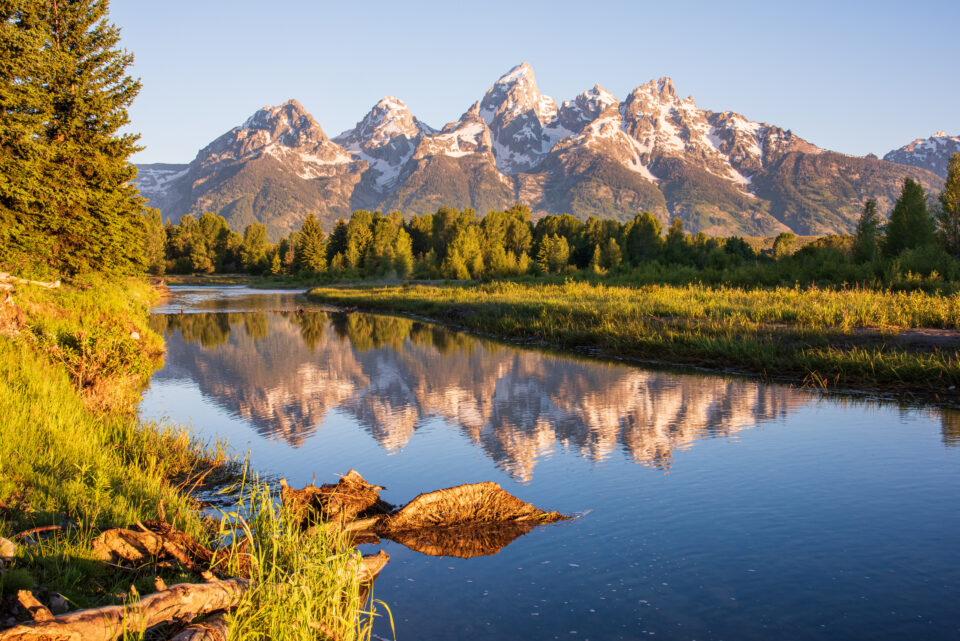
The Grand Tetons Were Formed as a Result of a Seismic Event
The Grand Tetons, a mountain range in western Wyoming, was formed due to a seismic event known as the Teton Fault. It’s a major geological fault that runs along the eastern base of the Tetons. It was created by tectonic activity along the boundary between the North American and Pacific Plates.
Around 9 million years ago, the land began to rise along the Teton Fault, creating a range of mountains that eventually became the Grand Tetons. Over time, erosion and glaciation have sculpted the mountains into their current form.
Today, the Grand Tetons are one of the most iconic natural landmarks in the United States, attracting millions of visitors yearly for hiking, camping, and other outdoor activities.
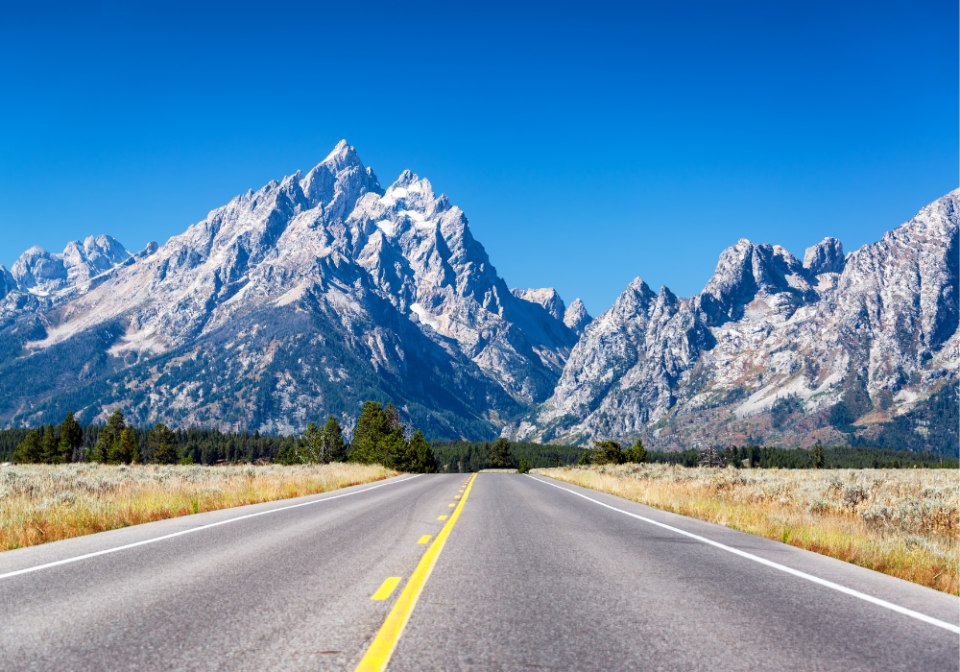
There Are 11 Active Glaciers in Grand Teton National Park
Ten glaciers have been previously named and can be found on U.S. Geological Survey maps: Teton, Middle Teton, Teepe, Schoolroom, Petersen, Falling Ice, Skillet, and East, Middle, and West Triple glaciers. There is one unnamed glacier near Glacier Peak.
However, some of these glaciers may have lost so much ice volume that they have stopped flowing and are no longer active glaciers.
You can see the Teton Glacier from the Teton Glacier turnout on the Teton Park Road. Look for the Falling Ice Glacier from the Mount Moran turnout and Skillet Glacier from Colter Bay area.
The 40-Mile Grand Teton Mountain Range is the Youngest Range of the Rocky Mountains
The Grand Teton range comprises sedimentary rocks of the late Cretaceous and early Tertiary age and is topped by the 13,770-foot Grand Teton peak. It is part of the Greater Yellowstone Ecosystem, a protected habitat for diverse wildlife.
We recommend the Grand Teton National Park scenic drive loop to stop and enjoy the different views you see of this stunning mountain range! It’s 42 miles and takes anywhere from half to a full day depending on how long you stop to take pictures, or if you plan to do any of the hikes!
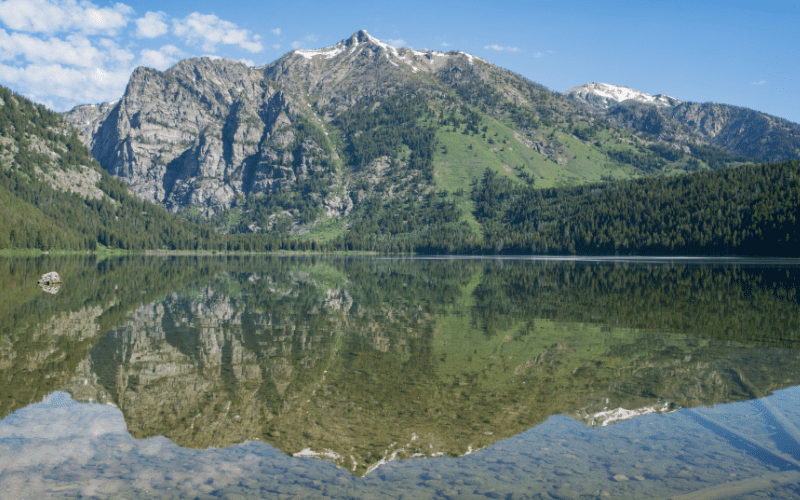
Grand Teton is Known for Its Stunning Alpine Lakes
There are six morainal lakes at the base of the Teton Range: Jackson, Leigh, Jenny, Bradley, Taggart and Phelps. These are glacial lakes filling a depression preventing meltwater from leaving the valley.
Jackson Lake is a natural lake that was enlarged by construction of the Jackson Lake Dam: 25,540 acres, maximum depth: 438 feet.
You’ll find a Grand Teton day hike to explore all six of those lakes.
Grand Teton also has over 100 alpine and backcountry lakes.
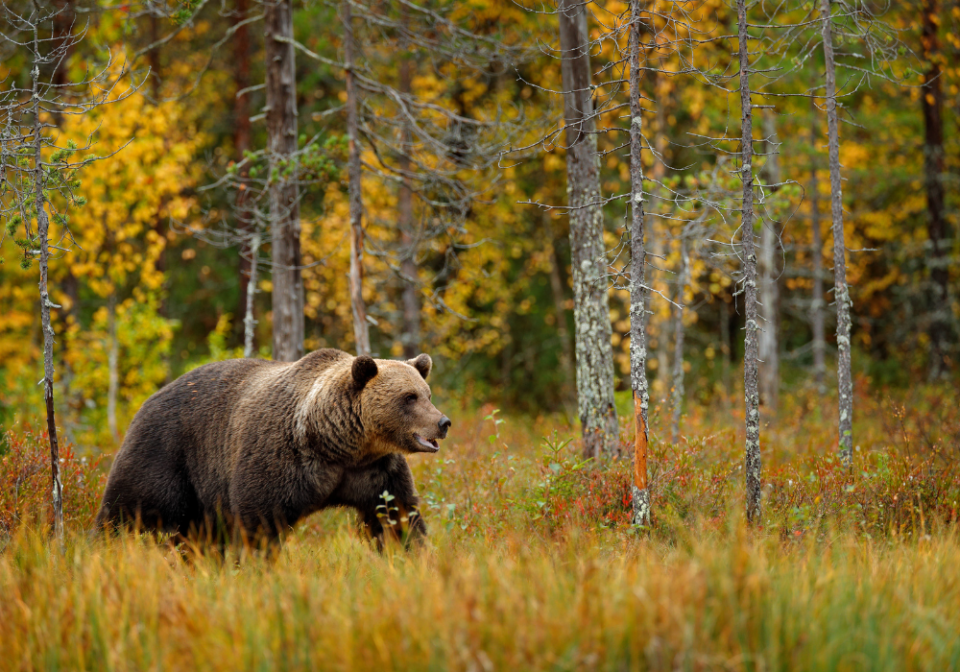
Grand Teton Has a Variety of Species of Plants and Animals
Some of the species you’ll find at Grand Teton National Park include:
- 7 species of coniferous trees
- 900+ species of flowering plans
- 22 species of rodents
- 17 species of carnivores (black and grizzly bears)
- 6 species of hoofed mammals
- 3 species of rabbits/hares
- 6 species of bats
- 4 species of reptiles (none venomous)
- 6 species of amphibians
- 16 species of fish
- 300+ species of birds
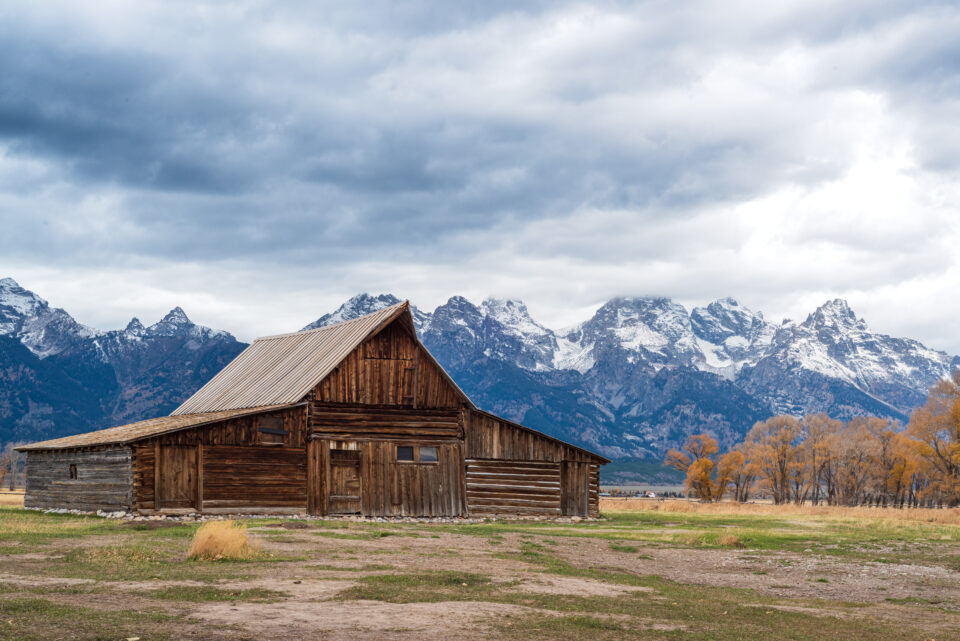
Mormon Row Was Established by Mormon Settlers
In the 1890’s, settlers from the Church of Jesus Christ of Latter-day Saints moved into the Jackson Hole Area from Idaho. At the time 27 homesteads were established here. Now only 6 homesteads remain standing.
In the 1990’s the cultural value of this settlement became more apparent and the park has since maintained the buildings so visitors can appreciate this fascinating past of Jackson Hole.
The two iconic barns at Mormon Row are the T.A. Moulton barn and the John Moulton barn. The T.A. Moulton barn (pointed roof) is south of Antelope Flats road, while the John Moulton barn (rounded roof) is to the north.
This is one of the best places to photograph Grand Teton National Park. The historic barns and homes here have one of the most scenic backdrops found anywhere in the world!
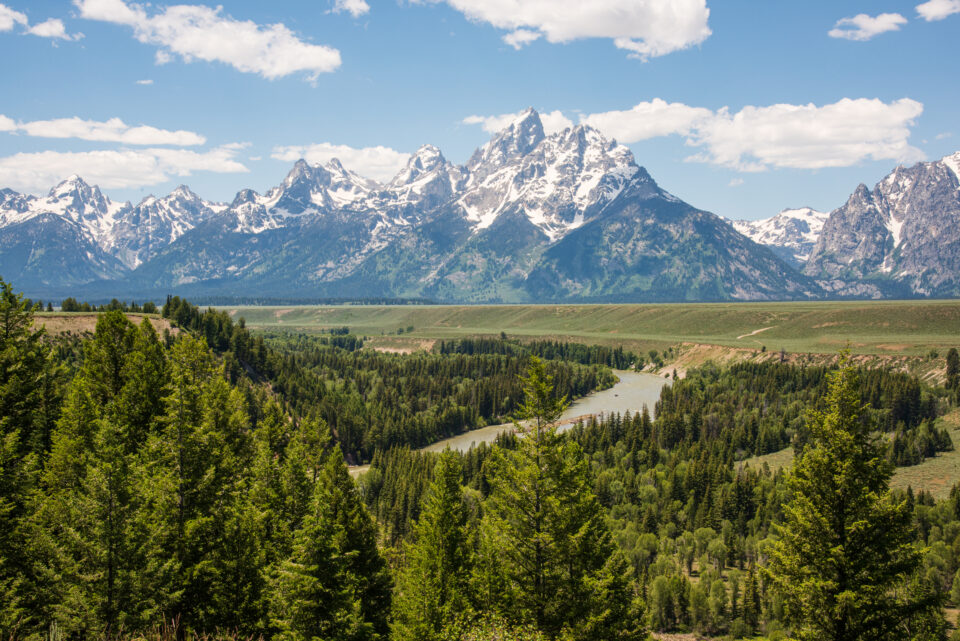
Ansel Adams Captured the Iconic Snake River Overlook Photograph
Ansel Adams photographed the iconic view of the Teton Range and Snake River from the area that’s now called Snake River Overlook.
It has become one of the most popular photo spots at Grand Teton to capture this image. But the trees have grown and the exact location is not known so it’s impossible to exactly re-create that famous image.
Grand Teton is the Only National Park in the United States With an Airport
Located near Jackson, Wyoming, the airport was established in the 1930s and provides air access to the park for tourists and visitors. It was then absorbed into the Jackson Hole National Monument and eventually became part of the Grand Teton Park boundaries.
Tips For Visiting Grand Teton National Park
We recommend the Grand Teton GuideAlong App to hear fun behind-the-scenes stories and local tips that play automatically as you drive, based on your GPS location.
Grand Teton National Park is open to visitors twenty-four hours a day, 365 days a year. However, the most popular months to visit are between May and September, when most park facilities and roads are open. During this time of year, the park also has a full range of programs for guests to enjoy.
Here are the important things to know before visiting Grand Teton National Park:
Best Season to Visit Grand Teton National Park
The best time to visit Grand Teton National Park is between mid-May and late-September – the fall colors are amazing! During this time all of the park’s visitor centers, hiking trails, and roads are open and accessible to the public.
In contrast, winter and spring, between November and April, the harsh Wyoming winter rolls into the area and forces many roads and facilities to either shut down for the season, or have reduced hours of operation, as a result of high levels of snowfall.
If you plan to visit Grand Teton National Park during the winter, be sure to check the Park’s alerts and current conditions page for the most up to date information on the park’s weather conditions and closures.
Where to Stay Near Grand Teton
You’ll find a lodging at Grand Teton National Park, as well as options outside the park in neighboring town: lodges, cabins, hotels, vacation rentals and campgrounds.
- Where to Stay Near Grand Teton National Park
- Grand Teton National Park Lodging
- Grand Teton National Park Camping
- RV Parks near Grand Teton National Park
- Glamping Near Grand Teton National Park
Here’s a list of our favorite places to stay:
- Elk Refuge Inn – this is right across from the refuge and the closes hotel to the park entrance – our favorite place to stay!
- Elk Country Inn – awesome property if you want to be in town.
- Vacation Rentals – we LOVE having a kitchen to prepare our meals!
- Hotels in Jackson Hole



